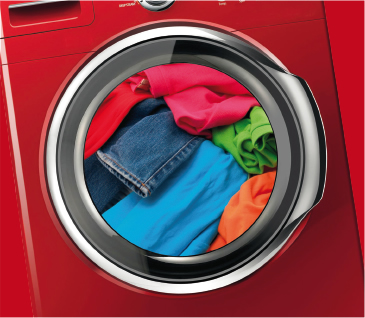Mermaids project’s preparatory actions have been completed
The first stage of the Mermaids project concludes and details the possible effects of the release of microplastics from washing processes
Composition of detergents and laundry habits were analysed in order to understand their influence in the breakage of fibre snippets from synthetic clothes
The Mermaids project, co-financed by the Life+ 2013 programme and partnered between Italian National Research Council (CNR), POLYSISTEC, LEITAT and Plastic Soup Foundation, has finished its first stage (A1, A2, and A3). This preliminary research focused on a series of quantifications and analysis of composition of detergents and laundry habits.
Microplastics were identified in the washing of synthetic fabrics, as they detach from the original fabrics in the shape of fibre snippets. Also, largest fibres will disintegrate and generate smaller fibres, highlighting the importance of reducing their existence, as they become smaller and damaging for the environment.
The research aimed to determine which kind of textiles represent the main cause of contamination of effluents arising from domestic washing. They concluded that the more important variables for microplastics release were linked to the detergent used, textile construction properties, pilling propensity and chemical and physical characteristics of the fibre.
Analysis of detergents composition
Soaps, detergents and other maintenance products industry offer a wide range of products that help to get rid of dirt and combat germs. A market study of common detergent products for laundry in Europe was undertaken, in order to get an idea of the principal ingredients used in their elaboration. The research also focused on studying how some of the products analyzed can increase or decrease the release of micro-fibres in the water after a number of washings. They expected to determine the influence of some ingredients in the fibre care, as well as its improvement by means of adding new compounds in the detergent formulation.
The researchers performed a detailed evaluation of liquid, powdered and special detergents in the European market, as well as laundry aids. They analysed European detergents and multinationals such as Henkel, Procter & Gamble, Reckitt Benckiser and Unilever as well as ECO products and generic brands, and they focused on three main ingredients in their composition: surfactants, polymers and alkaline agents. The conclusion highlighted that, although there is a big variety of laundry products with a very different composition in Europe, they always follow a similar pattern. They all contain surfactants and most of them contain polymers and alkaline agents, among other ingredients.
Laundry additives in detergents
The second part of the report examined the laundry additives used in the detergents to improve the fibre conservation. They are mostly polymers and help prevent the damage of fabrics and fibres. However, due to repeating washing and drying of clothes, there is a continuous pilling of the fabric.
The researchers assumed that the breakage of the cloth could be increased or decreased by some laundry products in the market. In order to prove that, different types of additives were studied (commercially available detergents and novel launched ones). The main properties of the additives are focused on reducing the breakage of the fibres and, therefore, a lower rate of release in the oceans. Consequently, the use of better additives should contribute to the mitigation of the impact cause by this micro and/or nanoplastics
Laundry habits that affect release of micro-fibres
As far as the laundry habits are concerned, specific conditions can influence in the release of textile micro-fibres into the water during a laundry washing:
- Some detergent properties can be aggressive to fibres, such as high pH or particular ingredients, but some additives can decrease the release of those fibres.
- Hardness of water has an effect on fibre release, since hard water requires a bigger amount of detergent to get the same results in comparison to soft water.
- Long periods of washing also cause more friction between fabrics, what means more fibre tearing.
- Washing with high temperatures damage colour fabrics.
The goal of the Mermaids project is to reduce the impact caused by micro and/or nano plastic particles through textile washing processes. The project aims to demonstrate and implement innovative technologies and additives for laundry processes and textile finishing treatments.
During the following steps of the project, researchers seek to analyze the real effect of these factors over the loss of micro-fibres during washing, as well as to find additives that can fix fibres to clothes in order to minimize its release to water.
A washing machine filter for plastic fibres
A few years ago, an innovator started developing a washing machine filter to prevent the frequent blockage of septic tanks due to clothing fibres from washing machine waste water. To solve this problem, the innovator developed an efficient but also practical filter. It is already used by more than 1300 units. This Innovation drew the attention of scientists who had already been studying the pollution of the environment by clothing fibres for some time. Through direct collaboration between the innovator and the scientists, the system will now be refined and applied to washing machines that discharge into wastewater systems.
This washing machine filter is a perfect product in combination with the Life+ program. This program is, with the participation of the Plastic Soup Foundation, looking at how clothes can be handled or treated in order to reduce the generation of microfibers.

